Abstract
Associations between psychosocial job characteristics and past myocardial infarction (MI) prevalence for employed males were tested with the Health Examination Survey (HES) 1960-61, N = 2,409, and the Health and Nutrition Examination Survey (HANES) 1971-75, N = 2,424. A new estimation method is used which imputes to census occupation codes, job characteristic information from national surveys of job characteristics (US Department of Labor, Quality of Employment Surveys). Controlling for age, we find that employed males with jobs which are simultaneously low in decision latitude and high in psychological work load (a multiplicative product term isolating 20 per cent of the population) have a higher prevalence of myocardial infarction in both data bases. In a logistic regression analysis, using job measures adjusted for demographic factors and controlling for age, race, education, systolic blood pressure, serum cholesterol, smoking (HANES only), and physical exertion, we find a low decision latitude/high psychological demand multiplicative product term associated with MI in both data bases. Additional multiple logistic regressions show that low decision latitude is associated with increased prevalence of MI in both the HES and the HANES. Psychological workload and physical exertion are significant only in the HANES.
Full text
PDF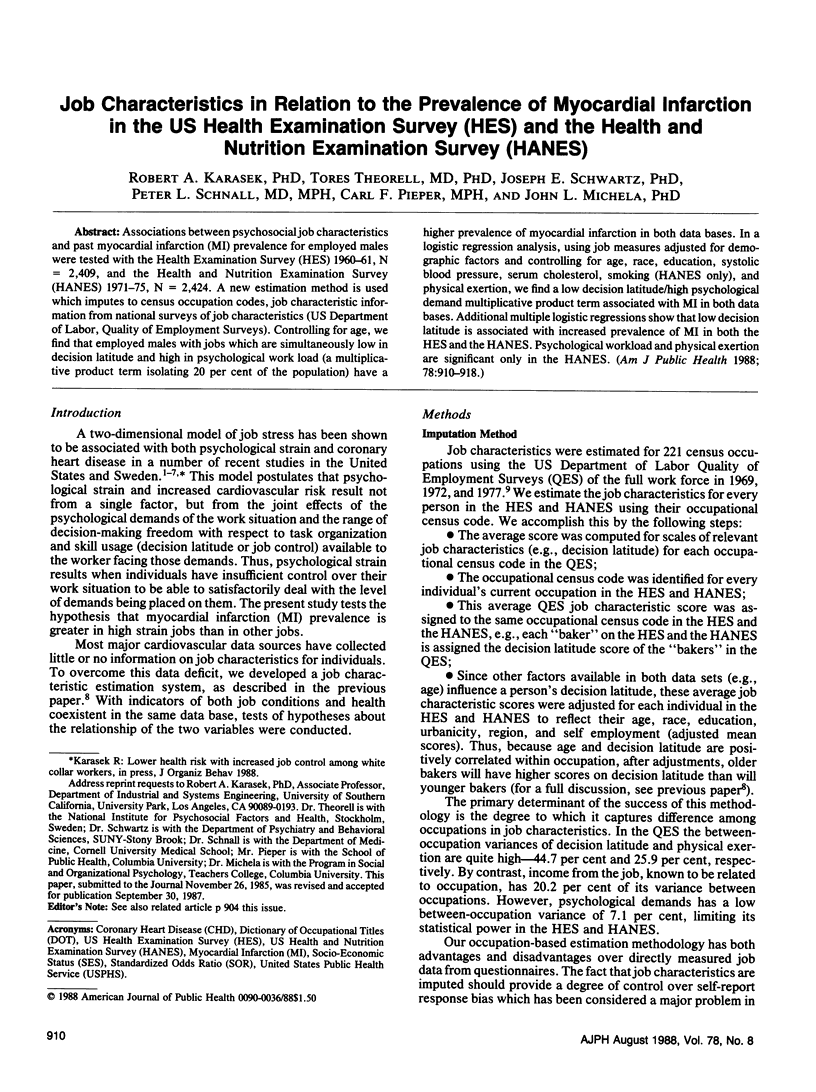
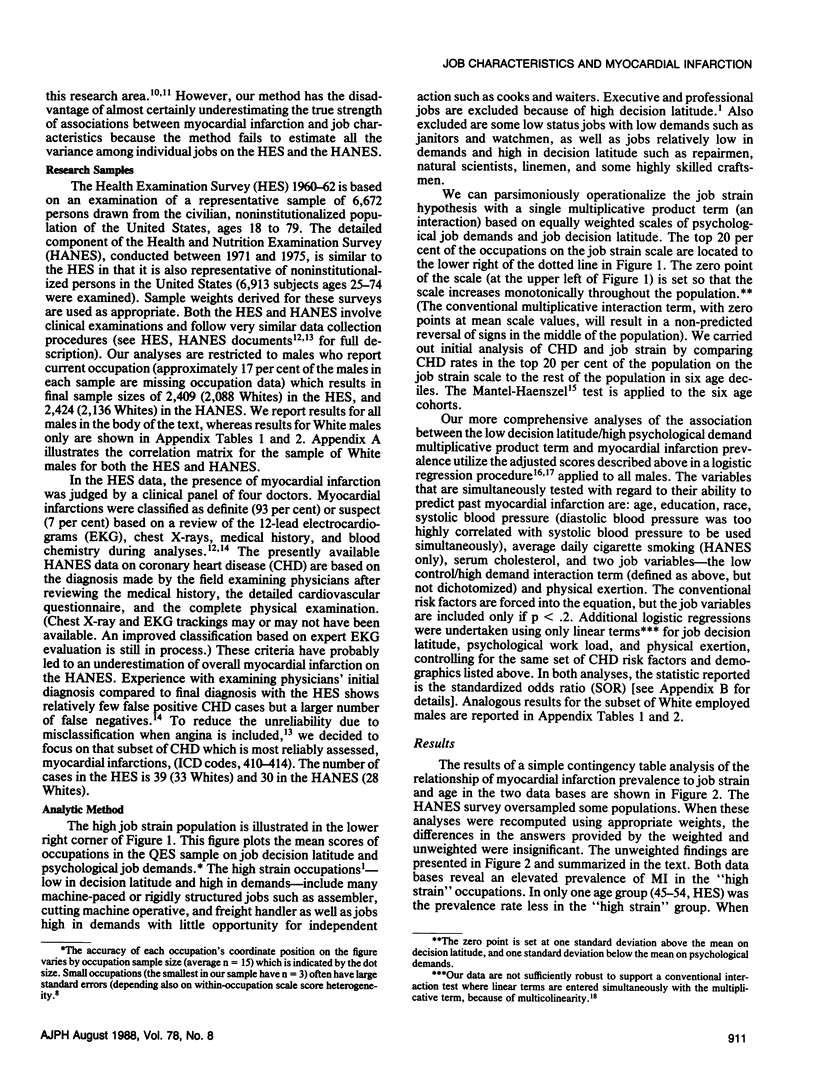
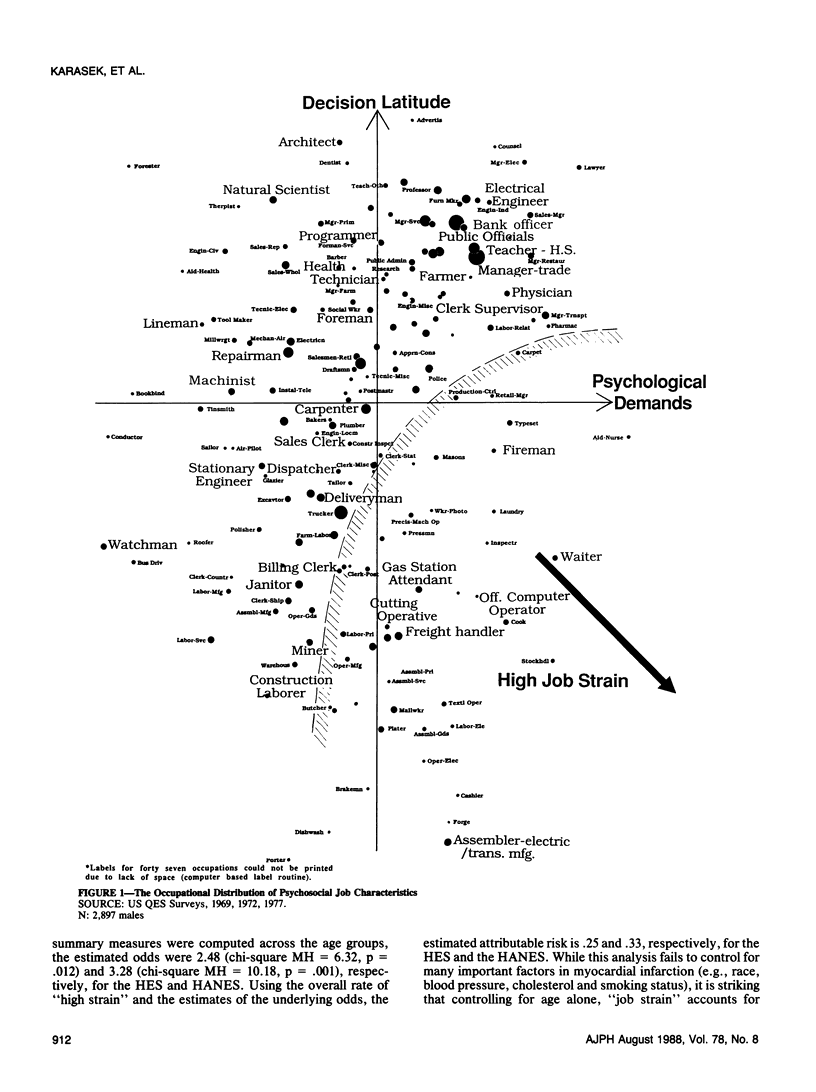
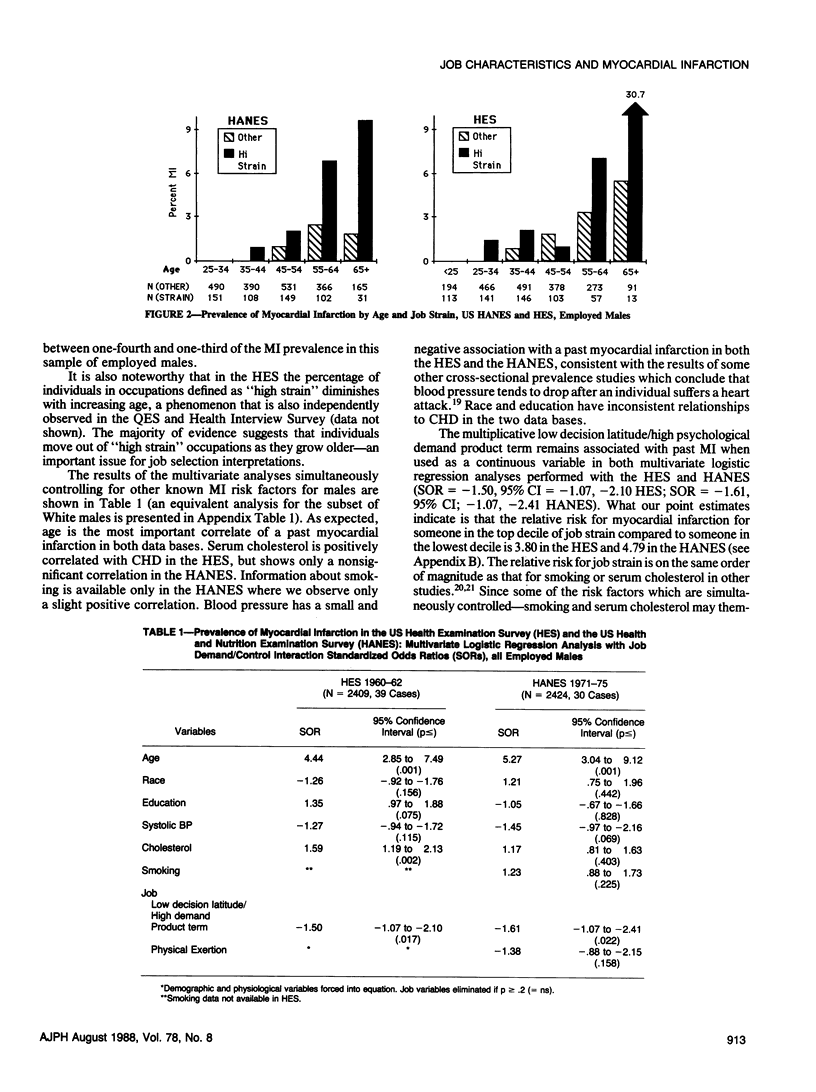
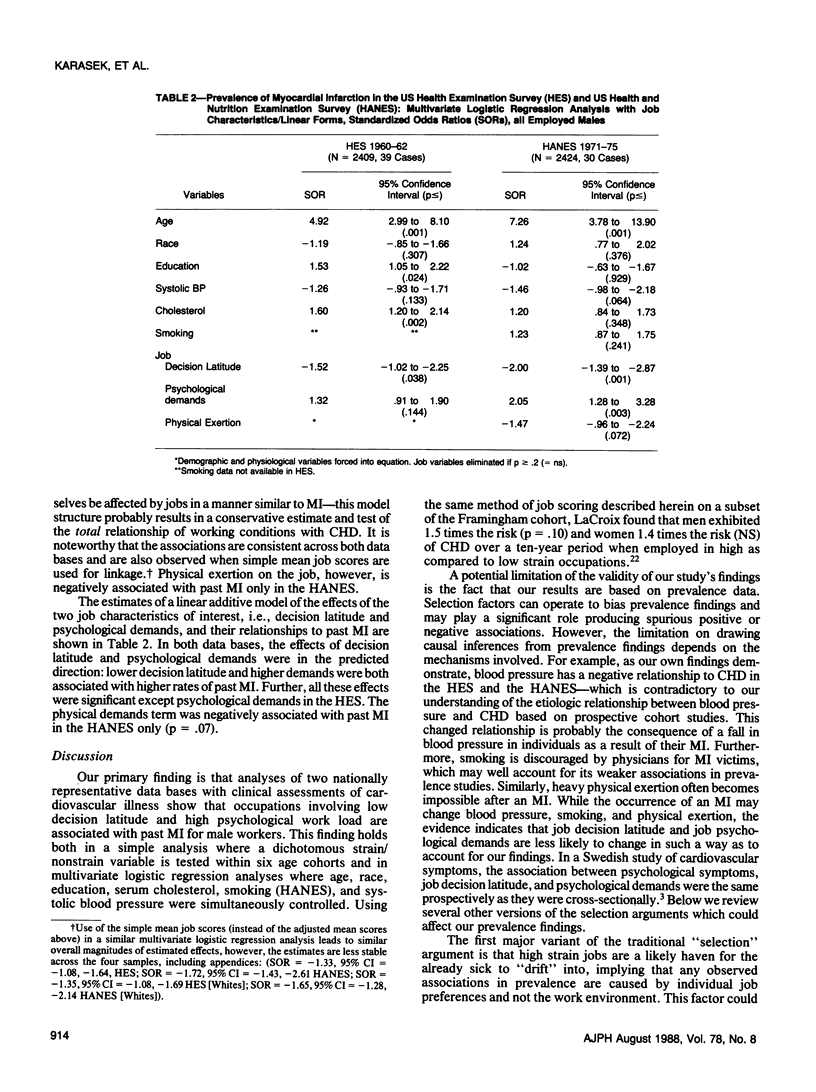
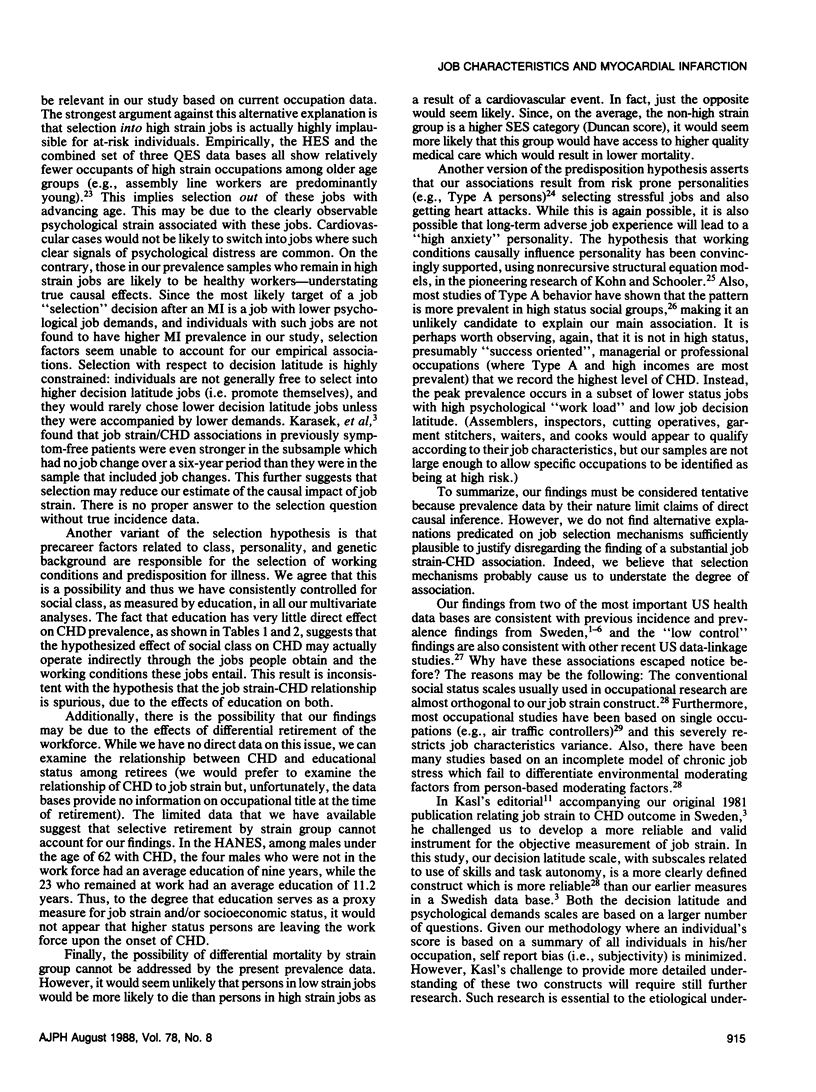
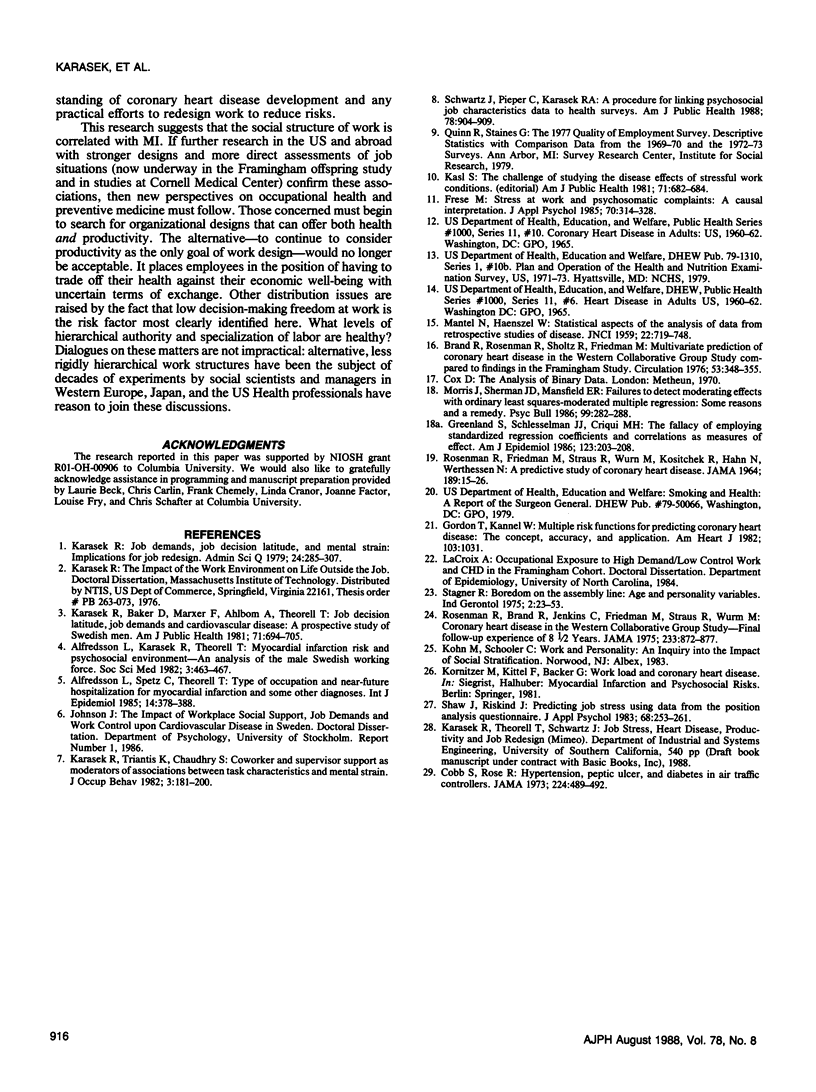
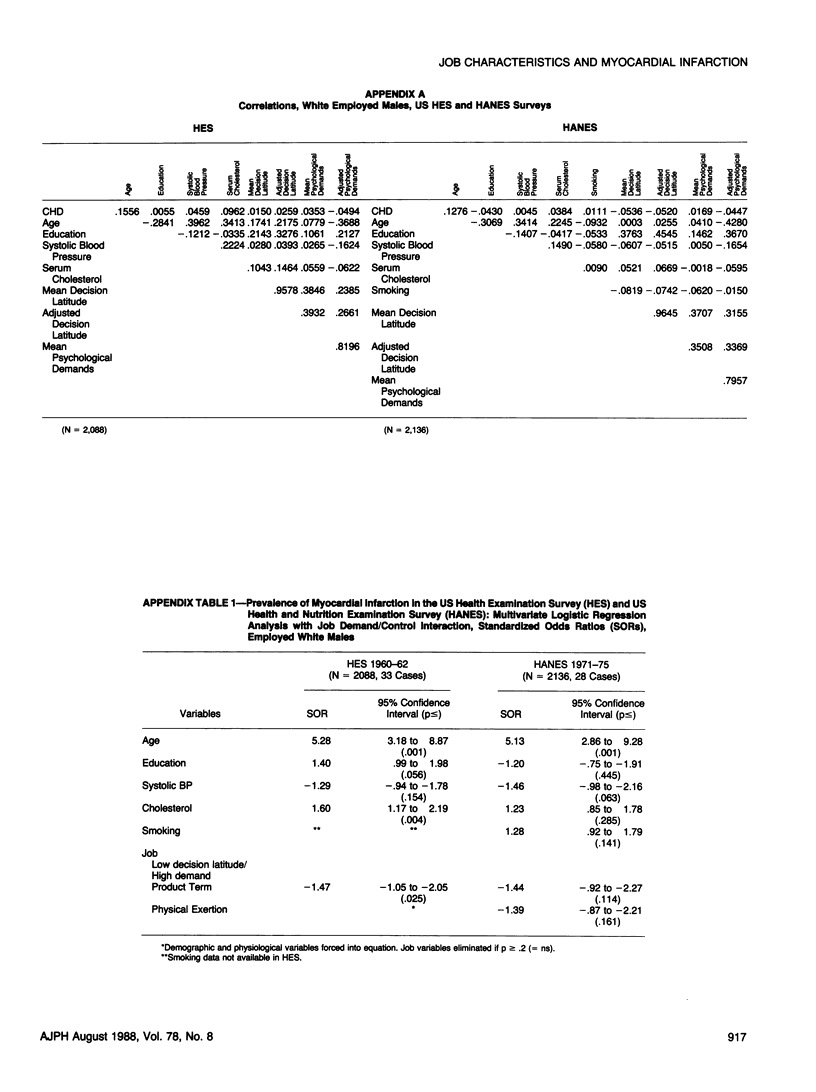
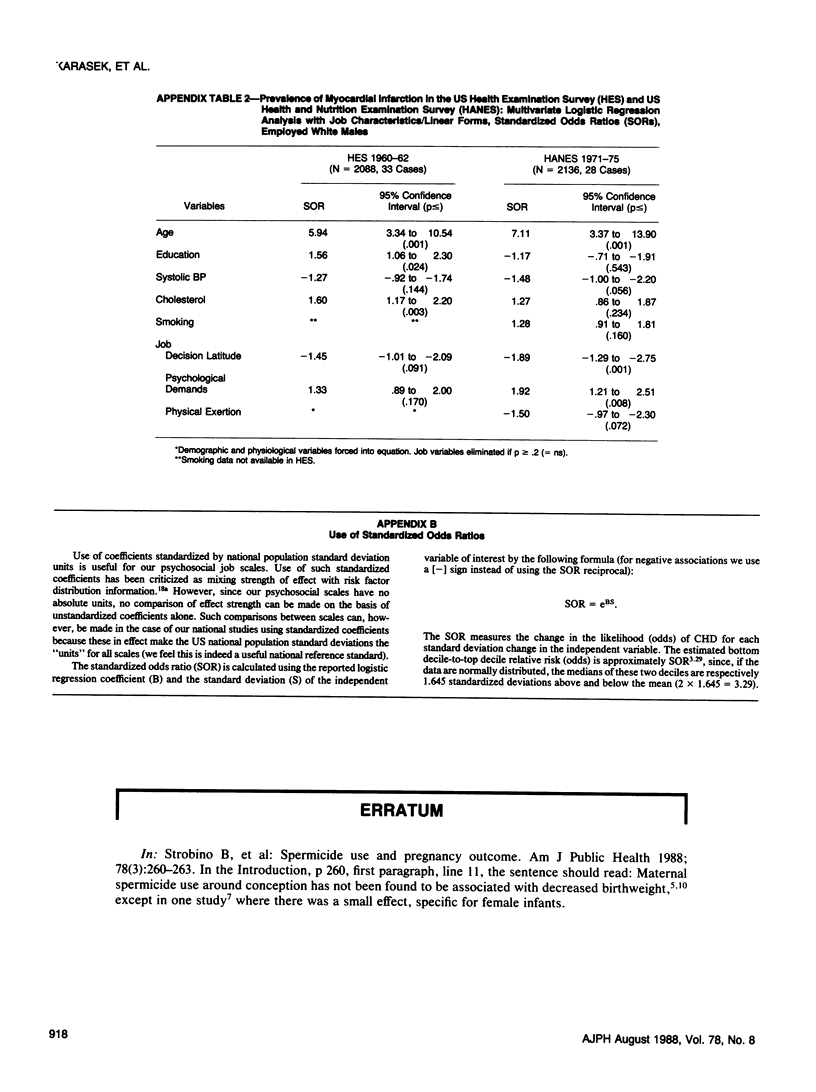
Selected References
These references are in PubMed. This may not be the complete list of references from this article.
- Alfredsson L., Karasek R., Theorell T. Myocardial infarction risk and psychosocial work environment: an analysis of the male Swedish working force. Soc Sci Med. 1982;16(4):463–467. doi: 10.1016/0277-9536(82)90054-5. [DOI] [PubMed] [Google Scholar]
- Alfredsson L., Spetz C. L., Theorell T. Type of occupation and near-future hospitalization for myocardial infarction and some other diagnoses. Int J Epidemiol. 1985 Sep;14(3):378–388. doi: 10.1093/ije/14.3.378. [DOI] [PubMed] [Google Scholar]
- Brand R. J., Rosenman R. H., Sholtz R. I., Friedman M. Multivariate prediction of coronary heart disease in the Western Collaborative Group Study compared to the findings of the Framingham study. Circulation. 1976 Feb;53(2):348–355. doi: 10.1161/01.cir.53.2.348. [DOI] [PubMed] [Google Scholar]
- Cobb S., Rose R. M. Hypertension, peptic ulcer, and diabetes in air traffic controllers. JAMA. 1973 Apr 23;224(4):489–492. [PubMed] [Google Scholar]
- Frese M. Stress at work and psychosomatic complaints: a causal interpretation. J Appl Psychol. 1985 May;70(2):314–328. [PubMed] [Google Scholar]
- Gordon T., Kannel W. B. Multiple risk functions for predicting coronary heart disease: the concept, accuracy, and application. Am Heart J. 1982 Jun;103(6):1031–1039. doi: 10.1016/0002-8703(82)90567-1. [DOI] [PubMed] [Google Scholar]
- Greenland S., Schlesselman J. J., Criqui M. H. The fallacy of employing standardized regression coefficients and correlations as measures of effect. Am J Epidemiol. 1986 Feb;123(2):203–208. doi: 10.1093/oxfordjournals.aje.a114229. [DOI] [PubMed] [Google Scholar]
- Karasek R., Baker D., Marxer F., Ahlbom A., Theorell T. Job decision latitude, job demands, and cardiovascular disease: a prospective study of Swedish men. Am J Public Health. 1981 Jul;71(7):694–705. doi: 10.2105/ajph.71.7.694. [DOI] [PMC free article] [PubMed] [Google Scholar]
- Kasl S. V. The challenge of studying the disease effects of stressful work conditions. Am J Public Health. 1981 Jul;71(7):682–684. doi: 10.2105/ajph.71.7.682. [DOI] [PMC free article] [PubMed] [Google Scholar]
- MANTEL N., HAENSZEL W. Statistical aspects of the analysis of data from retrospective studies of disease. J Natl Cancer Inst. 1959 Apr;22(4):719–748. [PubMed] [Google Scholar]
- ROSENMAN R. H., FRIEDMAN M., STRAUS R., WURM M., KOSITCHEK R., HAHN W., WERTHESSEN N. T. A PREDICTIVE STUDY OF CORONARY HEART DISEASE. JAMA. 1964 Jul 6;189:15–22. doi: 10.1001/jama.1964.03070010021004. [DOI] [PubMed] [Google Scholar]
- Rosenman R. H., Brand R. J., Jenkins D., Friedman M., Straus R., Wurm M. Coronary heart disease in Western Collaborative Group Study. Final follow-up experience of 8 1/2 years. JAMA. 1975 Aug 25;233(8):872–877. [PubMed] [Google Scholar]
- Schwartz J. E., Pieper C. F., Karasek R. A. A procedure for linking psychosocial job characteristics data to health surveys. Am J Public Health. 1988 Aug;78(8):904–909. doi: 10.2105/ajph.78.8.904. [DOI] [PMC free article] [PubMed] [Google Scholar]
- Shaw J. B., Riskind J. H. Predicting job stress using data from the Position Analysis Questionnaire. J Appl Psychol. 1983 May;68(2):253–261. [PubMed] [Google Scholar]


